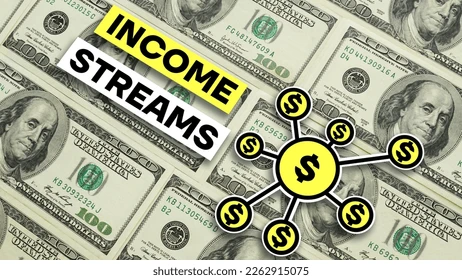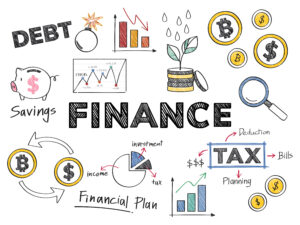Screen Time to Income: How the ‘Attention Economy’ Can Pay You for Doing What You Already Do Online
From Wasted Hours to Profitable Habits
If you’ve ever checked your weekly screen time report and thought, “Where did all those hours go?” — you’re not alone.
The average internet user now spends over 7 hours a day online, according to DataReportal’s 2025 Global Digital Report. That’s nearly one-third of our lives — scrolling, watching, reacting, and engaging.
But here’s what most people don’t realize: your attention already has value.
Every second you spend online fuels what experts now call the attention economy — where companies compete (and pay big money) for your time and focus.
In this guide, you’ll learn how to turn your daily screen time into a real income stream, ethically and sustainably — without changing your lifestyle or falling for “get-rich-quick” traps.
💡 What Is the Attention Economy?
The attention economy is the modern marketplace where your focus is the product.
Social media, streaming, search engines — all of them monetize your attention through ads and data insights. The more you engage, the more valuable you become.
In simple terms:
Attention = Currency
This is why platforms like YouTube, TikTok, and Instagram invest billions in algorithms designed to hold your focus. But now, with new digital tools and Web3 platforms, users like you can share in the profit — instead of giving it all away.
💰 Why Your Attention Is the New Currency
The global digital advertising industry is projected to reach $1.2 trillion by 2025, driven entirely by user behavior data.
Yet, most users earn nothing from the time they spend online.
The shift happening now — often called “user-owned attention” — lets individuals earn rewards, tokens, or passive income for participating in the digital ecosystem.
This isn’t about “quick cash.” It’s about monetizing the value of your time in smarter, sustainable ways.
📱 Real Ways to Turn Screen Time into Income (2025 Edition)
Here are several legitimate, AdSense-safe methods to monetize your screen time:
1. Data-Sharing Reward Platforms
Apps like Swash and Honeygain reward users for contributing anonymized data.
- Swash turns your web browsing into small passive earnings through secure data pooling.
- Honeygain pays you for sharing unused internet bandwidth with trusted companies.
💡 Why it works: You’re already browsing daily — now that activity can generate small, consistent rewards safely and automatically.
2. Watch-to-Earn and Engage-to-Earn Models
Platforms like Odysee (video sharing) and Current Rewards (music streaming) let users earn digital tokens for watching, listening, or engaging.
Unlike YouTube or Spotify, these services share revenue with users instead of only with advertisers.
This represents a paradigm shift — where participation itself becomes a form of labor.

3. Learn-to-Earn Platforms
New education-focused apps such as BitDegree and Coinbase Learn reward users for completing lessons or micro-courses.
For example:
- Coinbase pays users small crypto rewards for finishing quick tutorials.
- BitDegree offers tokens for completing online skill modules.
💡 Why it’s smart: You’re not just making money — you’re learning skills that can multiply your income later.
Read: 10 Smart Ways to Save Money Every Month Without Sacrificing Lifestyle
4. Surveys, Reviews, and Microtasks
Sites like UserTesting, Respondent.io, and ySense pay users for sharing opinions or testing products.
Though these don’t make you rich, they’re perfect for turning idle phone time into extra coffee money.
👉 Pro tip: Focus on platforms that pay in cash or PayPal, not gift cards — they convert better for real earnings.
5. Attention-Based Token Ecosystems
Emerging Web3 platforms reward digital attention through blockchain tokens.
For example:
- Brave Browser rewards you with BAT (Basic Attention Token) for viewing privacy-friendly ads.
- Odysee pays in LBRY Credits when you watch or upload content.
These models let you own part of the digital value chain, not just consume it.
🧩 How Big Companies Monetize You — and How You Can Too
Every scroll, like, and tap helps companies build multi-billion-dollar ad models.
But individuals are starting to ask: “If my attention is valuable, shouldn’t I get a share?”
By joining platforms that prioritize user ownership and transparency, you flip the script.
You move from being the product to being a partner in the digital economy.
Just like companies measure engagement to sell ads, you can measure your own engagement to earn — ethically.
🔄 2025 Trends: “Earn-to-Participate” Is the Future
Three new movements are reshaping the attention economy:
- Watch-to-Earn: Rewards for video engagement.
- Learn-to-Earn: Incentives for self-education.
- Play-to-Earn: Game participation as a revenue model.
Combined, these show that the future of work isn’t always about a job — it’s about how we spend our digital time.
Read: Easy Habits to Manage Your Money Better
🧠 Building a Sustainable “Screen Time Income” Routine
Like any income stream, consistency matters more than speed.
Here’s how to make your attention-based income meaningful:
- Pick 2–3 reliable platforms — diversify, but don’t spread too thin.
- Track time vs. reward — know your hourly value to stay efficient.
- Avoid burnout — use idle or passive time (commuting, background listening).
- Reinvest earnings — put small profits into learning or saving apps.
Internal link tip: you can connect this section to your article [“Easy Habits to Manage Your Money Better”] to build a cluster on smart earning habits.
⚠️ Risks, Scams, and Smart Safety Rules
Not every “get paid to” app is trustworthy. Follow these rules to protect your time and data:
- Never share personal information beyond what’s required.
- Research each app — check ratings, payment proofs, and reviews.
- Avoid pyramid or referral-only models.
- Withdraw regularly to avoid platform closures or policy shifts.
Internal link tip: link this part to your “10 Smart Ways to Save Money Every Month Without Sacrificing Lifestyle” post to help readers balance earning with saving.
🌍 Realistic Expectations: How Much Can You Actually Earn?
Let’s be honest — attention economy income is supplemental, not a full-time salary.
Typical monthly earnings range from:
- $5–$25 for casual users (Swash, Honeygain, Brave)
- $50–$100 for active earners who use multiple apps daily
- More if you combine with content creation (YouTube, Medium, TikTok)
The real benefit isn’t the cash — it’s the mindset shift.
You start treating your screen time as an asset, not a waste.
🔮 The Future of the Attention Economy
By 2030, experts predict that user-owned attention markets could represent a $200+ billion global sector.
The tools you’re exploring today are early versions of a system where digital participation becomes work.
As privacy laws evolve, users who control their own data and attention will have greater leverage — possibly even earning royalties for their engagement history.
In other words: the next decade belongs to smart attention earners.
🧾 Key Takeaway Summary
- The attention economy values your time and focus as currency.
- Platforms like Swash, Honeygain, Odysee, and Brave share small rewards for online participation.
- Treat it as a side income strategy, not a primary job.
- Be consistent, stay safe, and reinvest what you earn.
- The future of income isn’t always labor — it’s how wisely you spend your attention.













Post Comment